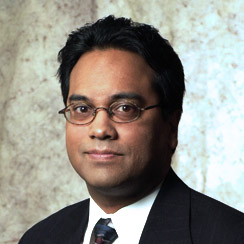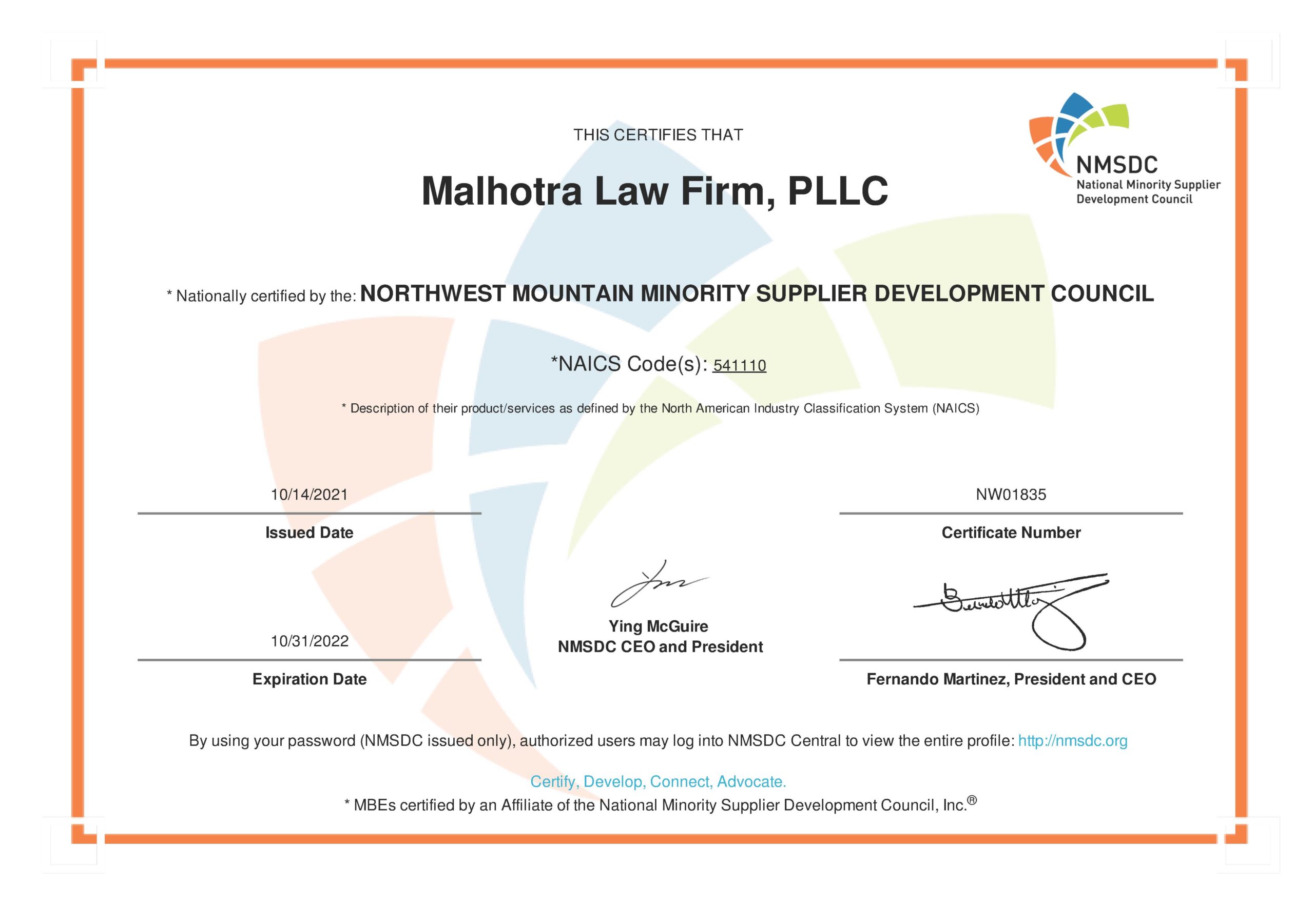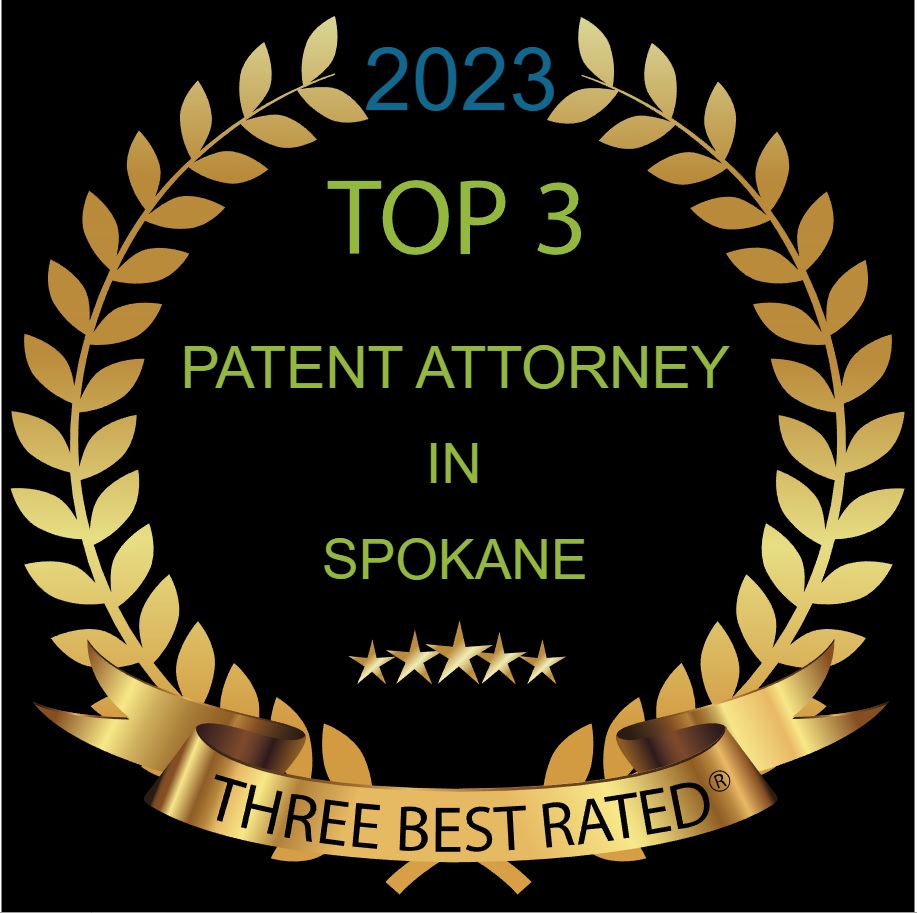Deepak Malhotra, JD, BSEE
Inventor and US Patent Attorney
Are you looking for a partner to help protect your ideas?
Let me introduce myself. I am Deepak Malhotra. I have over 20 years experience in patent preparation and prosecution, and have successfully prosecuted hundreds of patent applications to allowance. I have worked on large portfolios for many Fortune 500 companies. Importantly, I am dedicated to strong customer service. That’s not something you experience much in the legal world – but I believe you deserve timeliness as well as quality.
(By continuing, you agree that you have read, understood, and agree to this Disclaimer and Privacy Policy.)

Software Patent Lawyer, Electronics Patent Attorney
Deepak Malhotra, JD, BSEE has worked extensively with various technologies including software, RF communications, sensors, smart cards, ESD protection, tape drivers, servo systems, printers, static memory cells, dynamic memory cells, database, publishing systems, virtual reality, wafer production methods, wafer polishing, antenna diversity systems, RF collision arbitration systems, marketing systems, electron multipliers, microwave electronics, digital clock recovery loops, secure network authentication systems, user interfaces, and more. Malhotra Law Firm, PLLC was a minority certified patent law firm, certified by the Northwest Mountain Minority Supplier Development Council.


Malhotra Law Firm, PLLC has experience in:
- Protecting electrical, electronics, and mechanical inventions
- Assisting venture-capital funded start ups & Fortune 500 companies
- Helping foreign companies secure intellectual property protection in the U.S.
- Protecting software inventions with software patents
- International protection of inventions

Patents
In the language of the statute, any person who “invents or discovers any new and useful process, machine, manufacture, or composition of matter, or any new and useful improvements thereof, may obtain a patent,” subject to the conditions and requirements of the law. These classes of subject matter taken together include practically everything made by man and the processes for making them.

Trademarks
The primary function of a trademark is to indicate origin. However, trademarks also serve to guarantee the quality of the goods or services and, through advertising, serve to create and maintain demand. Rights in a trademark are acquired by use or applying for a federal trademark registration before use.

Business Method Patent Considerations
Attitudes towards business method patents have swung back and forth like a pendulum but recently the Supreme Court has refused to deem business methods patent ineligible. Business methods are generally eligible for patent protection if they pass a “Mayo/Alice” test. The first part of the test is to determine whether the claims are directed to an abstract idea, a law of nature or a natural phenomenon (i.e., a judicial exception). If the claims are directed to a judicial exception, the second part of the Mayo test is to determine whether the claim recites additional elements that amount to significantly more than the judicial exception. Many inventions that are thought to be business method inventions are really what I consider to be software inventions.

Software Patents
Like it or not, software patents are here to stay! Instead of hoping that they go away, your best defense against future potential infringement threats by others is to have an arsenal of your own. The U.S. Supreme Court, in a case known as Alice v. CLS, held that using a computer to automate a well known financial method is an unpatentable abstract idea. So what types of software inventions are patent-eligible?

How to Protect Phone Apps
Are you a smart phone app developer? If so, you will want to know what forms of intellectual property are available for protecting smart phone apps.

Provisional Patent Applications
The United States has a form of patent application called a Provisional Patent Application. Some people feel that these are an easy and inexpensive way to obtain a filing date and some patent rights, but they are usually unaware of the risks and downside.

Important Changes to U.S. Patent Law: America Invents Act (AIA)
The United States switched from a First-to-Invent system to a First-to-File system. That makes it important to file patent applications sooner rather than later.
Conducting A Patent Novelty Search
A thorough patent search is an enormous undertaking. However, you can start with a novelty search that covers the most likely languages and places.
The History of Software Patents Blog
IOENGINE, LLC v INGENICO INC., FEDERAL CIRCUIT 2024
IOENGINE, LLC appealed decisions of the U.S. Patent and Trademark Office Office’s Patent Trial and Appeals Board that found unpatentable certain claims of U.S. Patent Nos. 8,539,047; 9,059,969; and 9,774,703. The patents relate to a tunneling client access point (TCAP) that is a “highly secure, portable, power efficient storage and…
USC IP PARTNERSHIP V META , FEDERAL CIRCUIT 2023 (SOFTWARE PATENTS)
USC brought suit for infringement against Facebook, Inc. (now Meta Platforms, Inc.), asserting that its “News Feed” feature infringes claims 1–17 of U.S. Patent No. 8,645,300. The software patent relates to a search engine software method for predicting which webpages to recommend to a web visitor based on inferences of…
TRINITY INFO MEDIA, LLC V. COVALENT, INC., FEDERAL CIRCUIT 2023 (SOFTWARE PATENTS)
Trinity Info Media, LLC sued Covalent, Inc. for infringement of U.S. Patent Nos. 9,087,321 and 10,936,685 relating to methods and systems for connecting users based on their answers to polling questions. U.S. Patent No. 9,087,321 teaches that its claimed invention is “directed to a poll-based networking system that connects users…
HANTZ SOFTWARE, LLC, V SAGE INTACCT, INC., FEDERAL CIRCUIT 2023 (SOFTWARE PATENTS)
Any ineligibility judgment should apply to only claims asserted in a complaint if held patent-ineligible after a motion to dismiss for failure to state a claim. Hantz sued Sage alleging that Sage infringed U.S. Patent Nos. 8,055,559 and 8,055,560. Sage moved to dismiss the complaint for failure to state a…
HAWK TECHNOLOGY SYSTEMS, LLC, V CASTLE RETAIL, LLC, FEDERAL CIRCUIT 2023 (SOFTWARE PATENTS)
A multi-format digital video product system capable of maintaining full-bandwidth resolution while providing professional quality editing and manipulation of images, which is capable of conserving bandwidth while preserving data is not patent-eligible. Appellant Hawk Technology Systems, LLC sued Appellee Castle Retail, LLC in the Western District of Tennessee for patent…
Latest News
Perlmutter v. Trump: Does the President Control the Copyright Office?
By Dennis Crouch
In an extraordinary lawsuit filed today, Register of Copyrights Shira Perlmutter has sued President Trump and several administration officials, challenging her purported removal from office and the President's attempt to install Deputy Attorney General Todd Blanche as acting Librarian of Congress. Perlmutter v. Blanche, No. 25-cv-1659 (D.D.C. filed May 22, 2025). The case raises fundamental questions about the separation of powers and the unique status of the Library of Congress within our constitutional structure.
- Perlmutter Complaint
- Perlmutter TRO Motion
- Perlmutter Memorandum in Support
- Perlmutter Declaration
- Perlmutter Text of Proposed Order
The controversy began on May 8, 2025, when President Trump fired Librarian of Congress Dr. Carla D. Hayden via email. Two days later, the administration terminated Ms. Perlmutter, who had served as Register of Copyrights since 2020. The President then purported to appoint Deputy Attorney General Todd Blanche as acting Librarian of Congress under the Federal Vacancies Reform Act (FVRA) as well as Paul Perkins as acting Register of Copyrights. When Mr. Blanche's representatives arrived at the Library on May 12 to assume control, Library staff refused to recognize his authority and contacted the Capitol Police.
Rapunzel, Rapunzel, Let Down Your Generic Hair (and Let Us In)!
by Dennis Crouch
Rebecca Curtin – a law professor and parent who purchases princess dolls – filed a TTAB opposition against United Trademark Holdings’ application to register the mark “RAPUNZEL” for dolls and toy figures (Class 28). Curtin alleged the mark should not be registered because “RAPUNZEL” is a generic name, is merely descriptive, and fails to function as a trademark for doll products. UTH moved to dismiss the opposition, arguing that Curtin lacked standing (i.e., lacked “entitlement to a statutory cause of action”) under the Lanham Act’s opposition provision, 15 U.S.C. § 1063. Initially, the TTAB allowed Curtin’s case to proceed – relying on the Federal Circuit’s older, more permissive standing test from Ritchie v. Simpson, 170 F.3d 1092 (Fed. Cir. 1999), which had held that “any person who believes that she would be damaged” by a registration may oppose if she shows a real interest and a reasonable belief of harm. But by the final decision, the TTAB reversed course. Citing the Supreme Court’s intervening decision in Lexmark International, Inc. v. Static Control Components, Inc., 572 U.S. 118 (2014), and the Federal Circuit’s own decision in Corcamore, LLC v.
The Remedies Remedy is Almost Complete: EcoFactor v. Google
by Dennis Crouch
The Federal Circuit’s en banc decision in EcoFactor v. Google marks a significant tightening of standards for admitting patent damages expert testimony. The court (in an 8–2 split) overturned a $20 million jury award by excluding the patentee’s expert evidence as insufficiently reliable under Federal Rule of Evidence 702 and Daubert. Writing for the majority, Chief Judge Moore treated what traditionally might have been viewed as a factual dispute over “comparable” license agreements as, instead, a matter of contract interpretation for the court. In doing so, the majority held that the trial judge failed in his gatekeeping duty by allowing the jury to hear an expert opinion founded on speculative leaps—namely, the assumption that prior licensees agreed to a particular royalty rate that was not reflected in the actual license terms. Two dissenting judges (Judges Reyna and Stark) each criticized the court for overstepping the proper scope of Rule 702 and for usurping the jury’s role in weighing evidence. As I discuss below, I believe that the dissents have the better view of this case. [Read the Decision]
I see this case as part of a crafted doctrinal transformation that I call the “Remedies Remedy,” that began with the Supreme Court’s undermining of injunctive relief in eBay Inc.
While one of only three Electrical Engineer attorneys at his previous firm, the firm was ranked #2 in the U.S. for quality of Electrical Patents by PatentRatings, LLC. Deepak Malhotra has developed relationships with litigators and has assisted clients with aggressive enforcement of intellectual property. Software patents, business method patents, electrical patents, and mechanical patents are his specialties.
Deepak Malhotra Is Not Just A Patent Attorney,
He Is An Inventor Too, With Two U.S. Patents In His Name.



